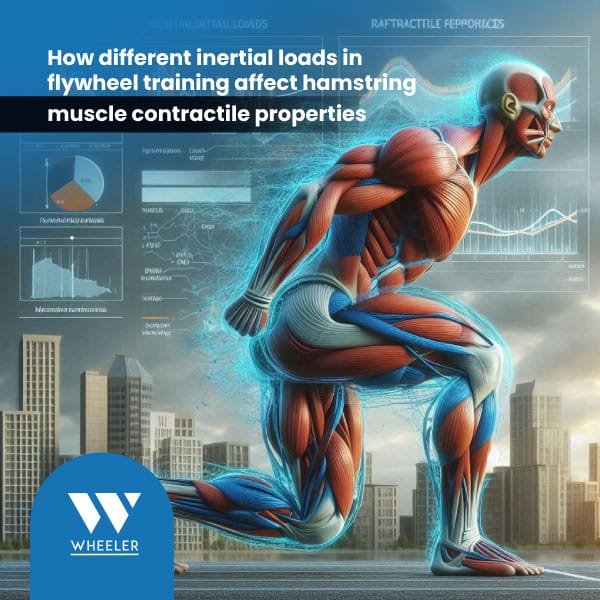How different inertial loads in flywheel training affect hamstring muscle contractile properties
Introduction
Flywheel training has proven its value in strength and performance development, especially in sports like football. But how does the level of inertia—or flywheel load—affect the way muscles contract and adapt, particularly the hamstrings?
This article explores how different inertial settings influence muscle performance and the implications for training planning, injury prevention, and specificity.
Why focus on the hamstrings?
Hamstrings play a critical role in sprinting, deceleration, and stability of the knee joint. They are also one of the most injured muscle groups in football.
Understanding how load selection during flywheel exercises alters contractile behavior is key to optimizing results and minimizing injury risk.
The study: What was tested?
Researchers used flywheel leg curl exercises to examine how different levels of inertial load influenced:
- Peak torque
- Rate of torque development
- Concentric vs. eccentric force outputs
- Time under tension
They tested multiple inertial loads (from low to high) and analyzed how the muscle responded across the range of motion.
Main findings
- Low inertia = faster, more explosive contractions
- Encourages higher movement velocity
- Useful for developing power and reactive strength
- Shorter time under tension, less fatigue
- High inertia = greater eccentric overload
- Produces higher peak torque, especially in the eccentric phase
- Increases time under tension
- Better for structural adaptations (fascicle length, tendon resilience)
- Moderate inertia offers a balance
- Allows good force production without compromising velocity
- Safer for beginners or athletes coming back from injury
Key insight: The muscle responds differently depending on the load—just like with free weights, load selection determines the adaptation.
Practical applications in football training
How to choose inertia based on your goal:
Training Goal | Inertia Recommendation |
|---|---|
Eccentric strength | High inertia (≥ 0.075 kg·m²) |
Speed-strength & RFD | Low inertia (≈ 0.025–0.050) |
Muscle hypertrophy | Moderate to high |
Return to play | Start with low, progress slowly |
Injury prevention | Moderate-to-high, with controlled volume |
Exercise examples with load focus:
- Low inertia: fast flywheel squats, explosive rows, quick lunges
- High inertia: hamstring curls, slow eccentric squats, controlled split squats
Tips for coaches and practitioners
- Track performance: Use average power, velocity, or peak force as markers.
- Progressive overload applies: Start light and progress load as technique improves.
- Technique matters more than load: Especially in high-speed movements.
- Use contrast strategies: Combine low inertia (speed) and high inertia (strength) in the same session for max transfer.
Integration ideas
- In preseason: build eccentric strength using high inertia protocols
- In-season: use low-load flywheel work for maintenance and neuromuscular stimulation
- In rehab: start with low inertia and gradually increase as tolerated
- Before matches: brief low-inertia sessions can activate the nervous system
Final thoughts
Flywheel training isn’t just about spinning hard—it’s about intentionally using load to guide adaptation. Choosing the right inertia lets you tailor your program to your athletes’ needs, whether you’re building resilience or explosive power.
Next up, we’ll analyze how deceleration plays a crucial role in performance and injury prevention, especially in multi-directional sports like football.
Author


